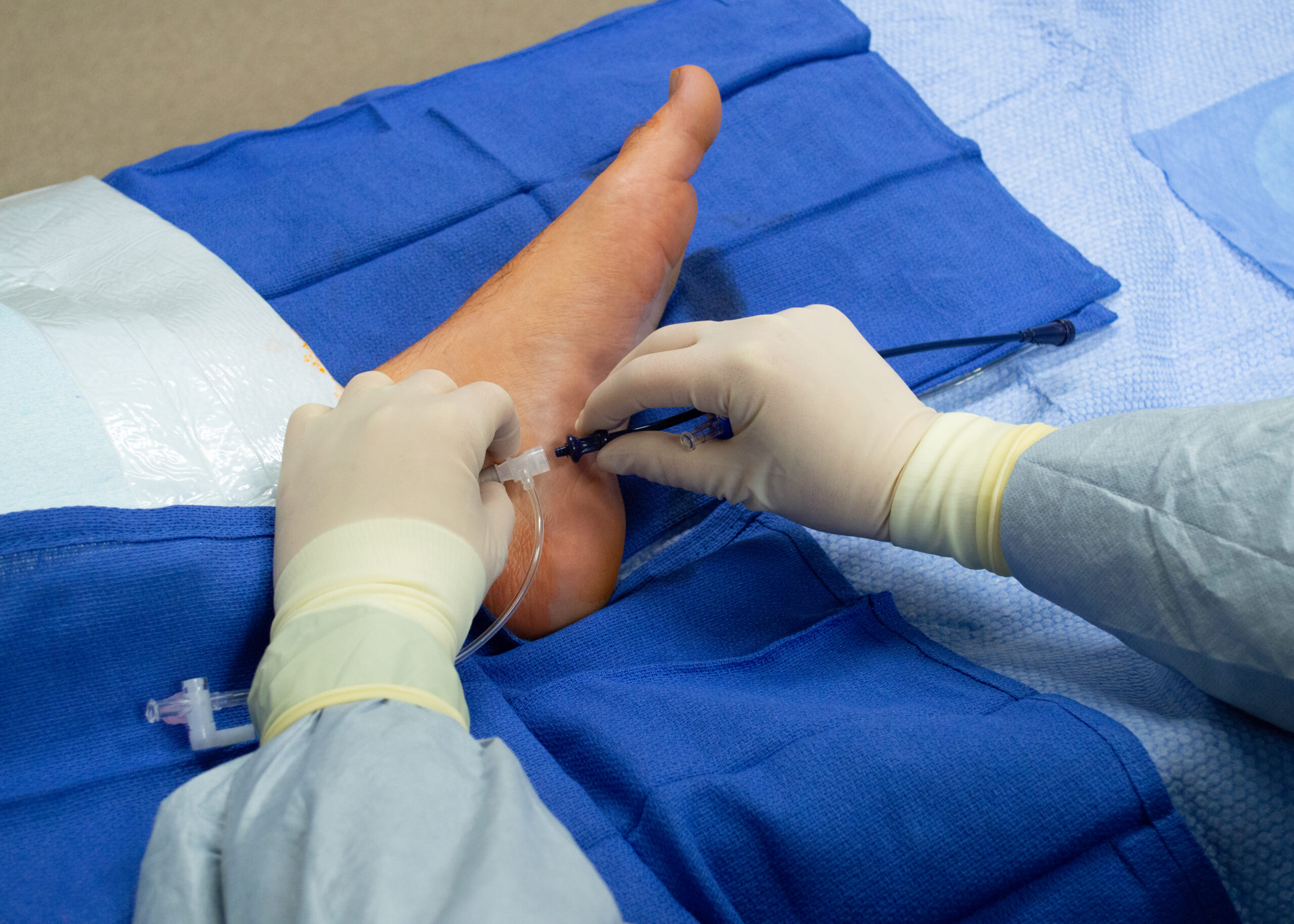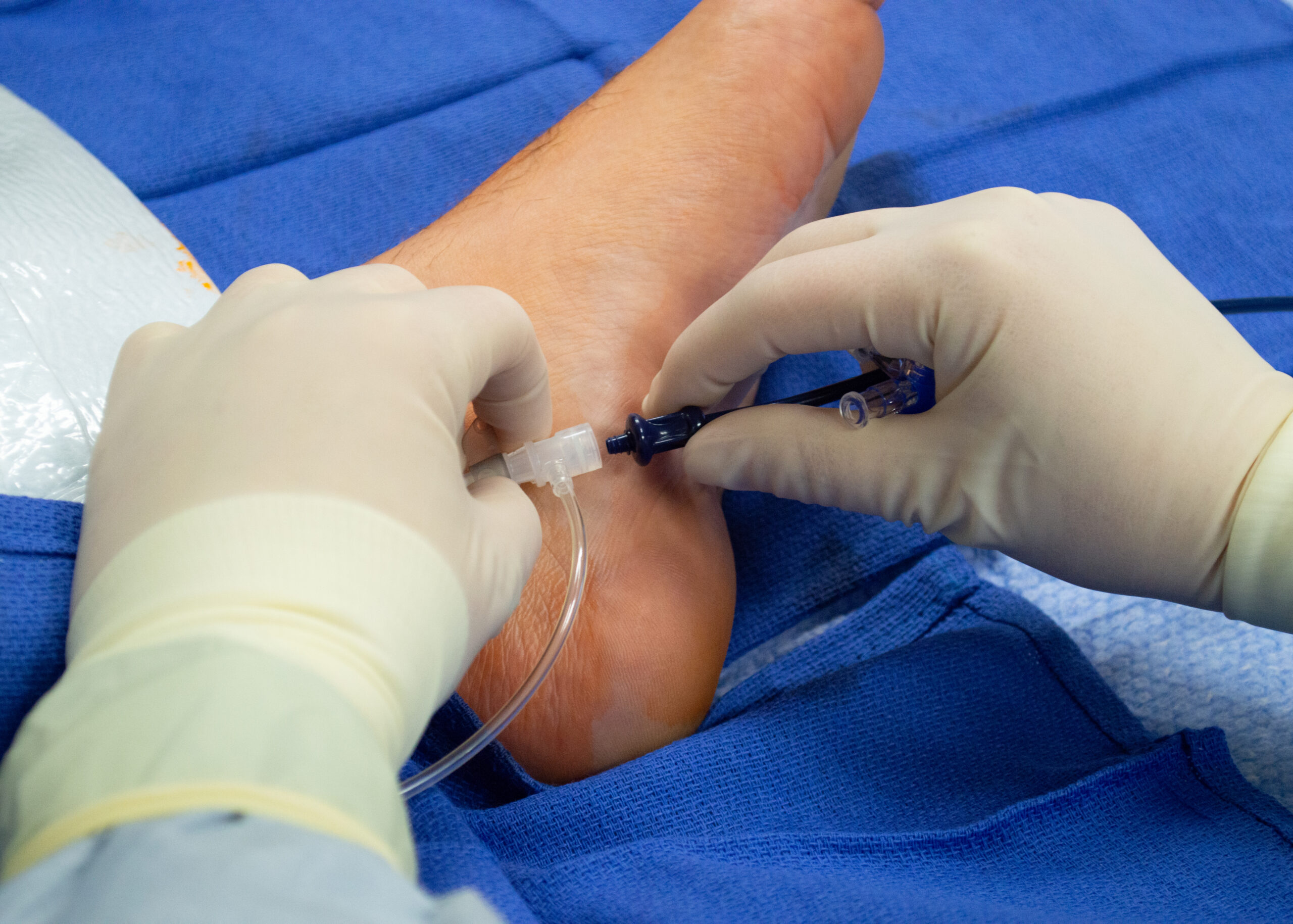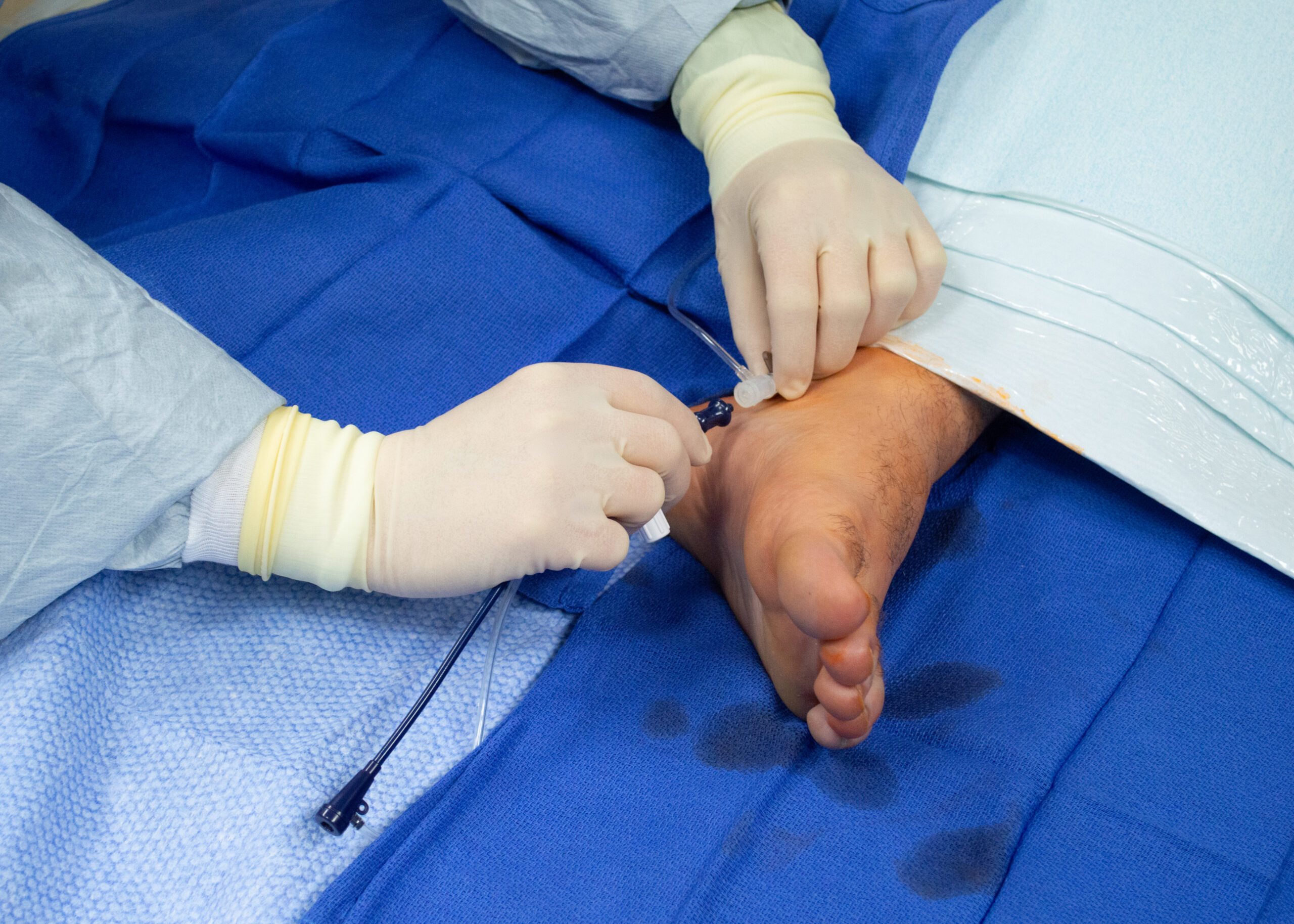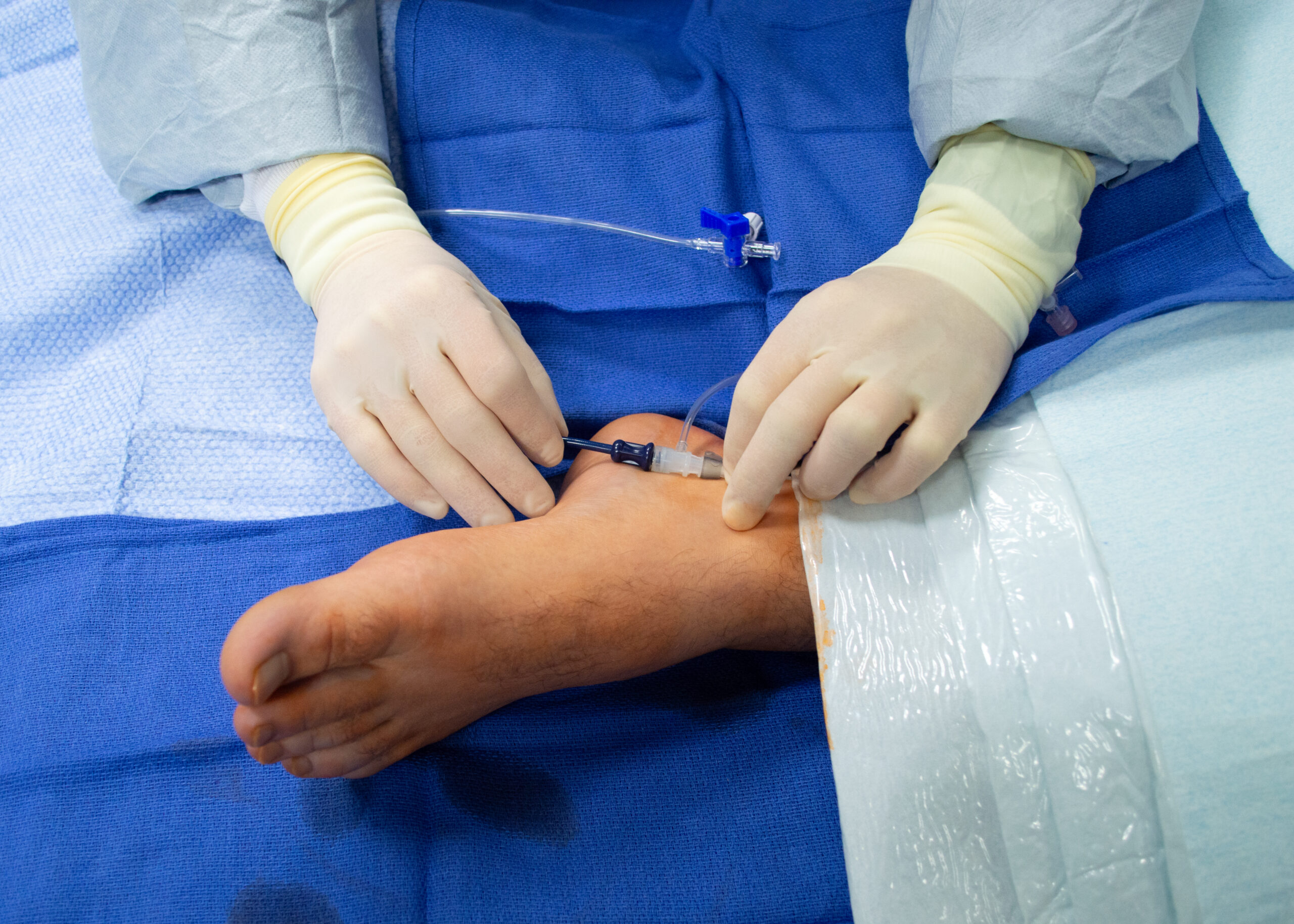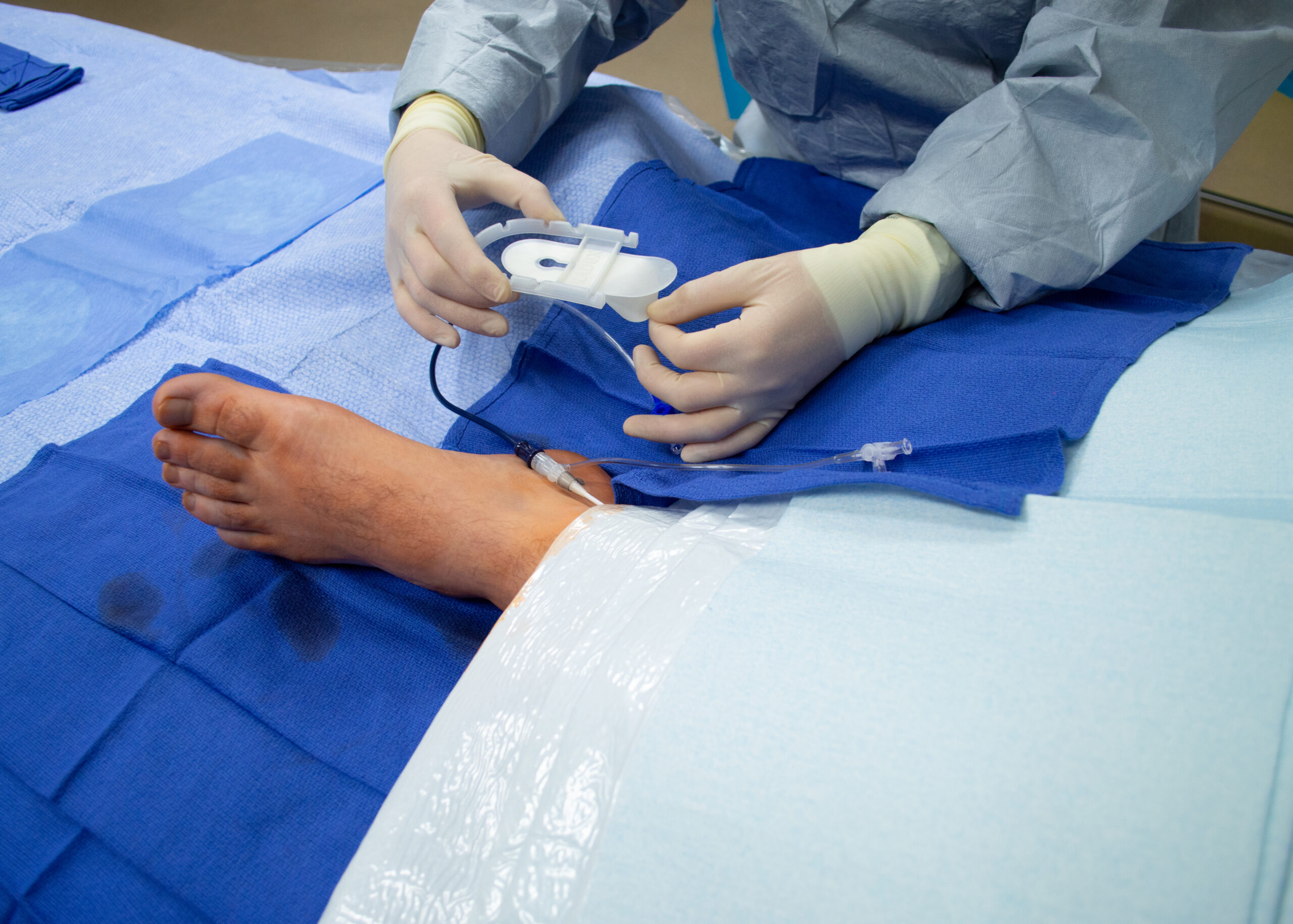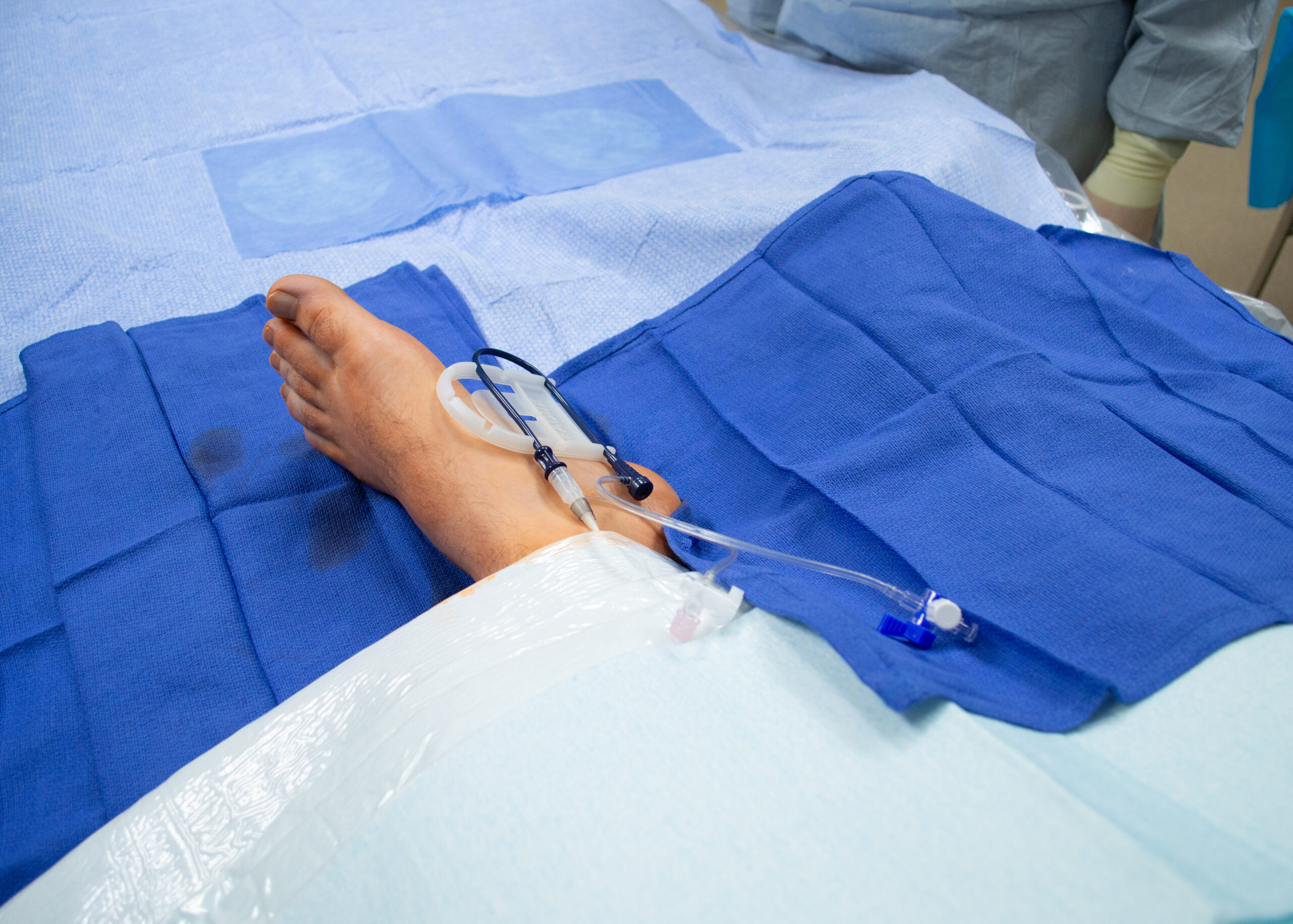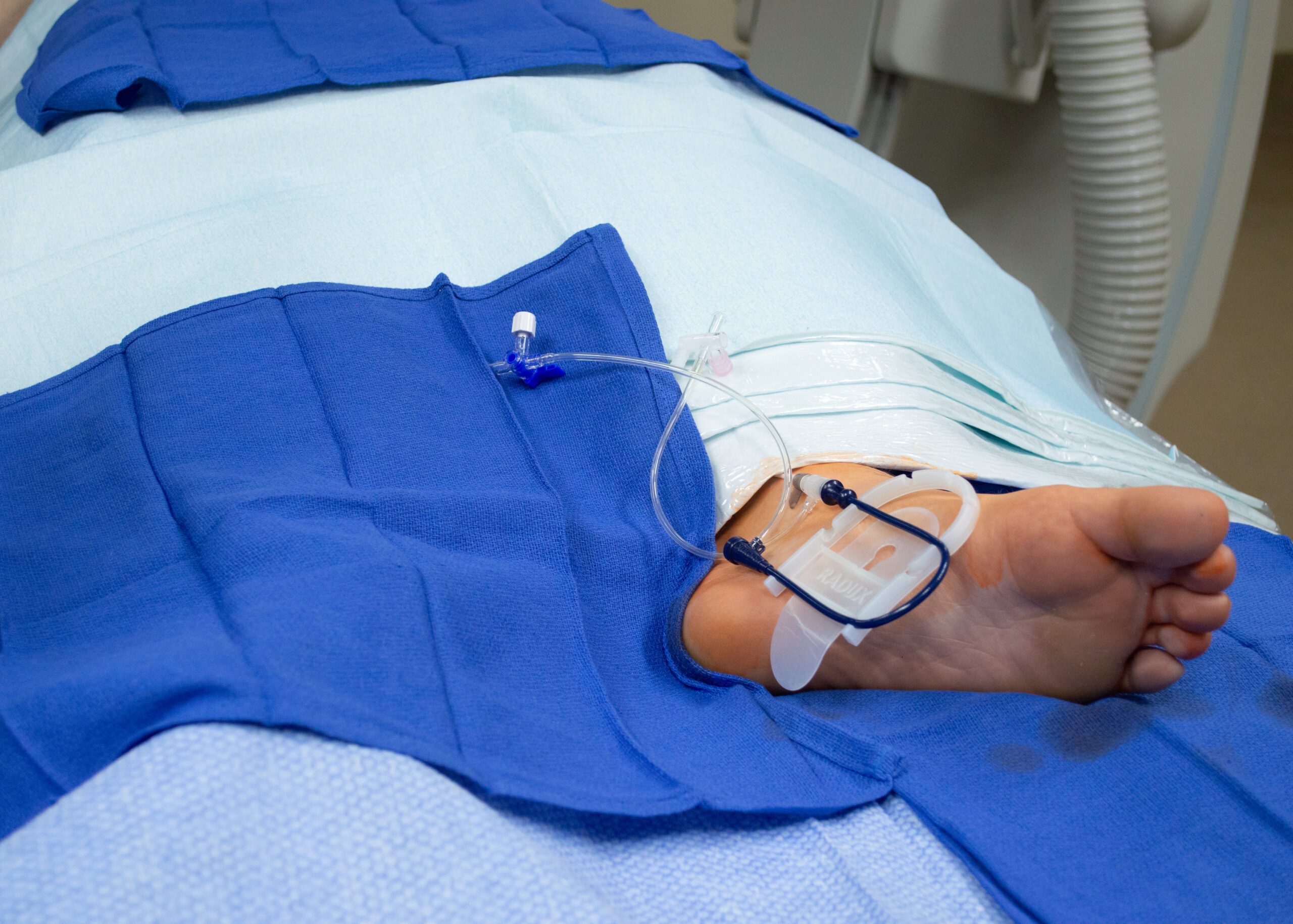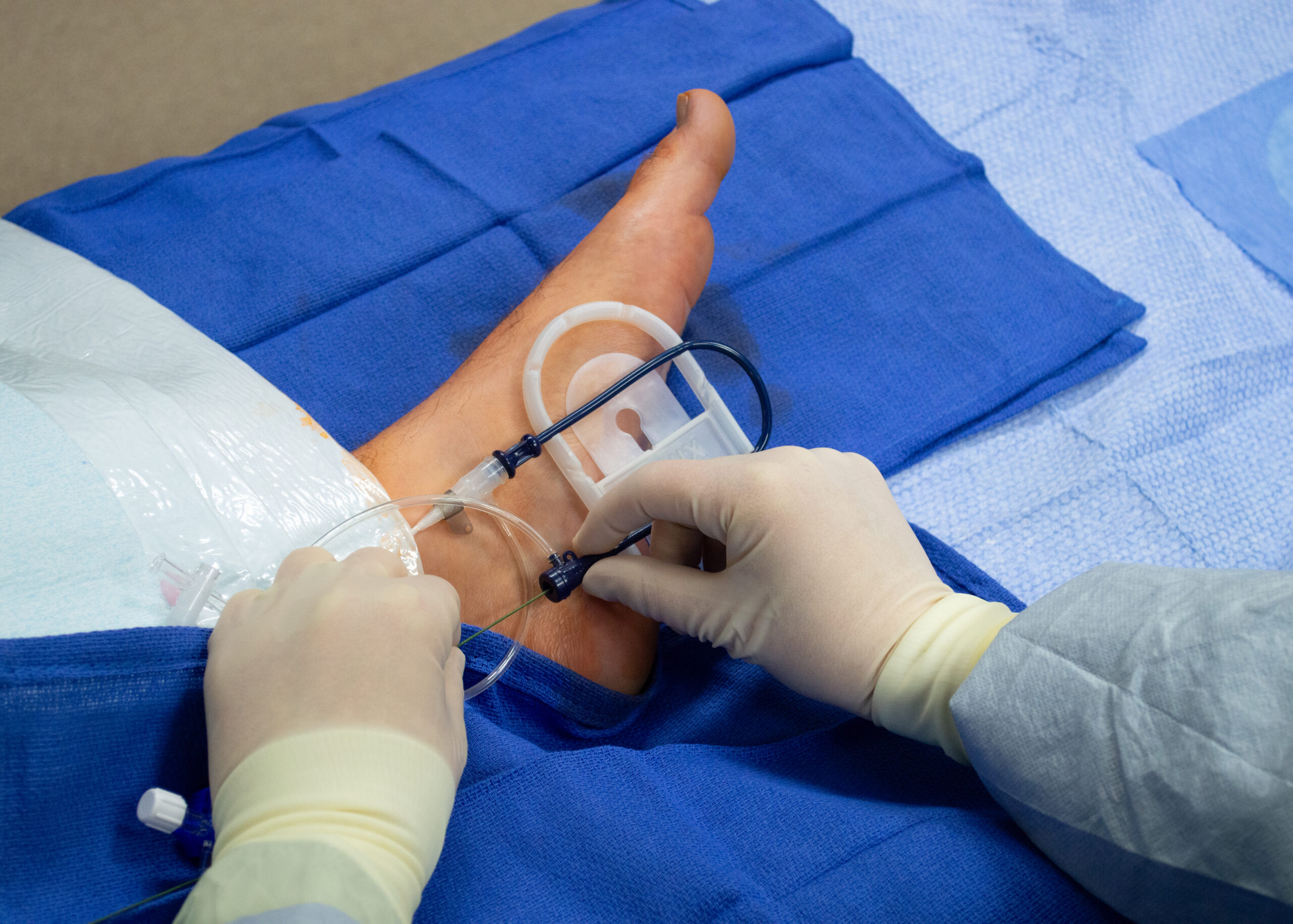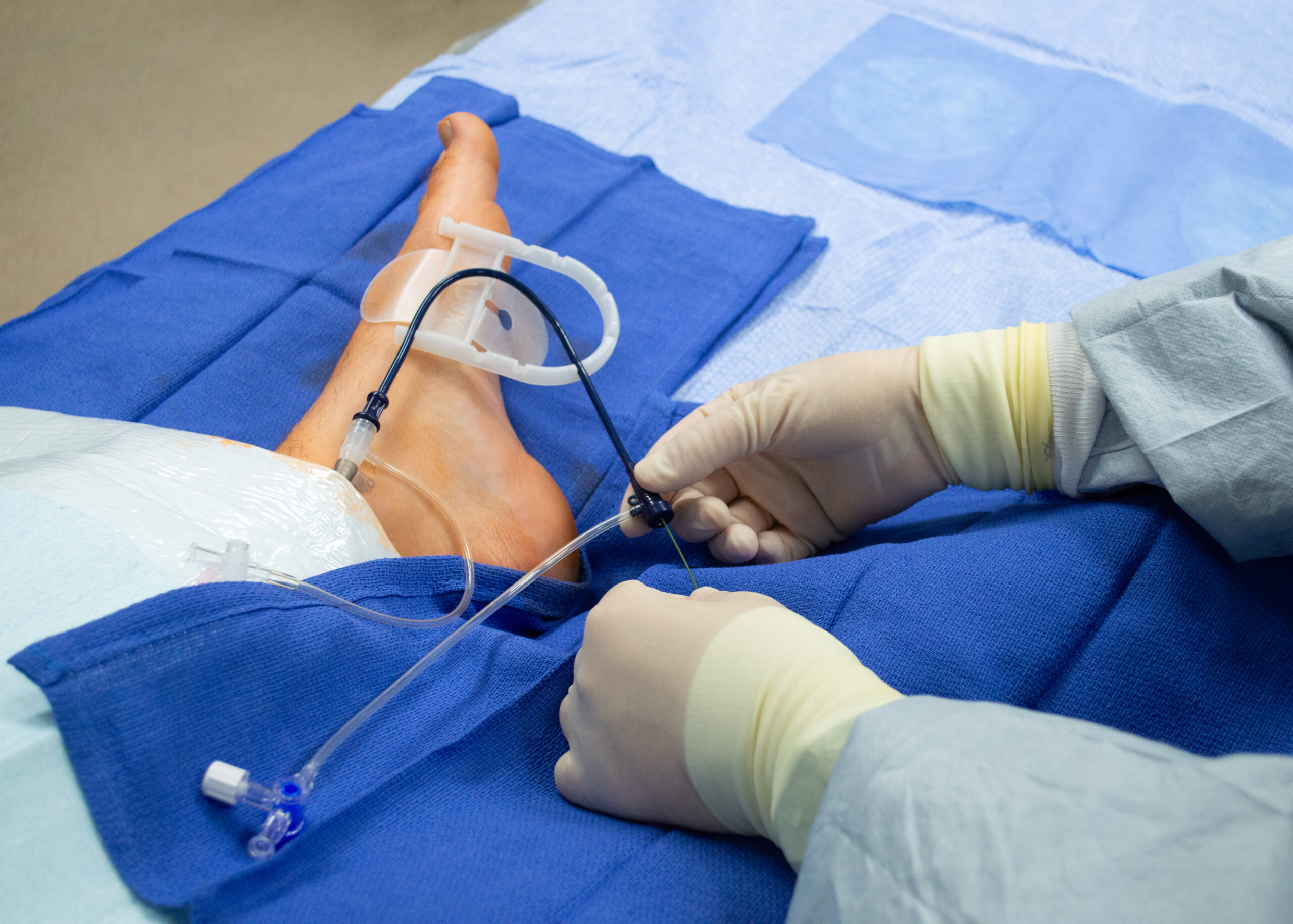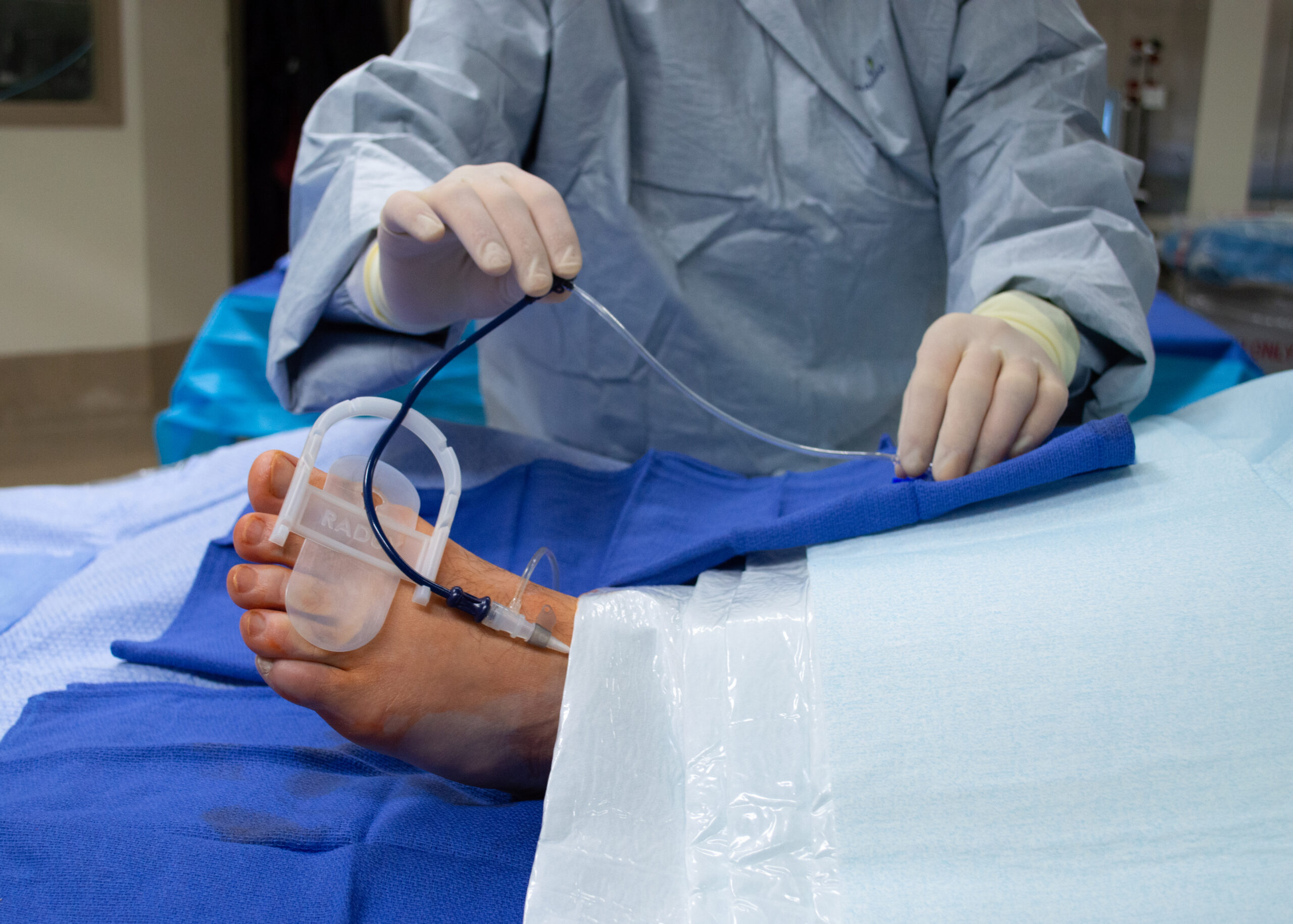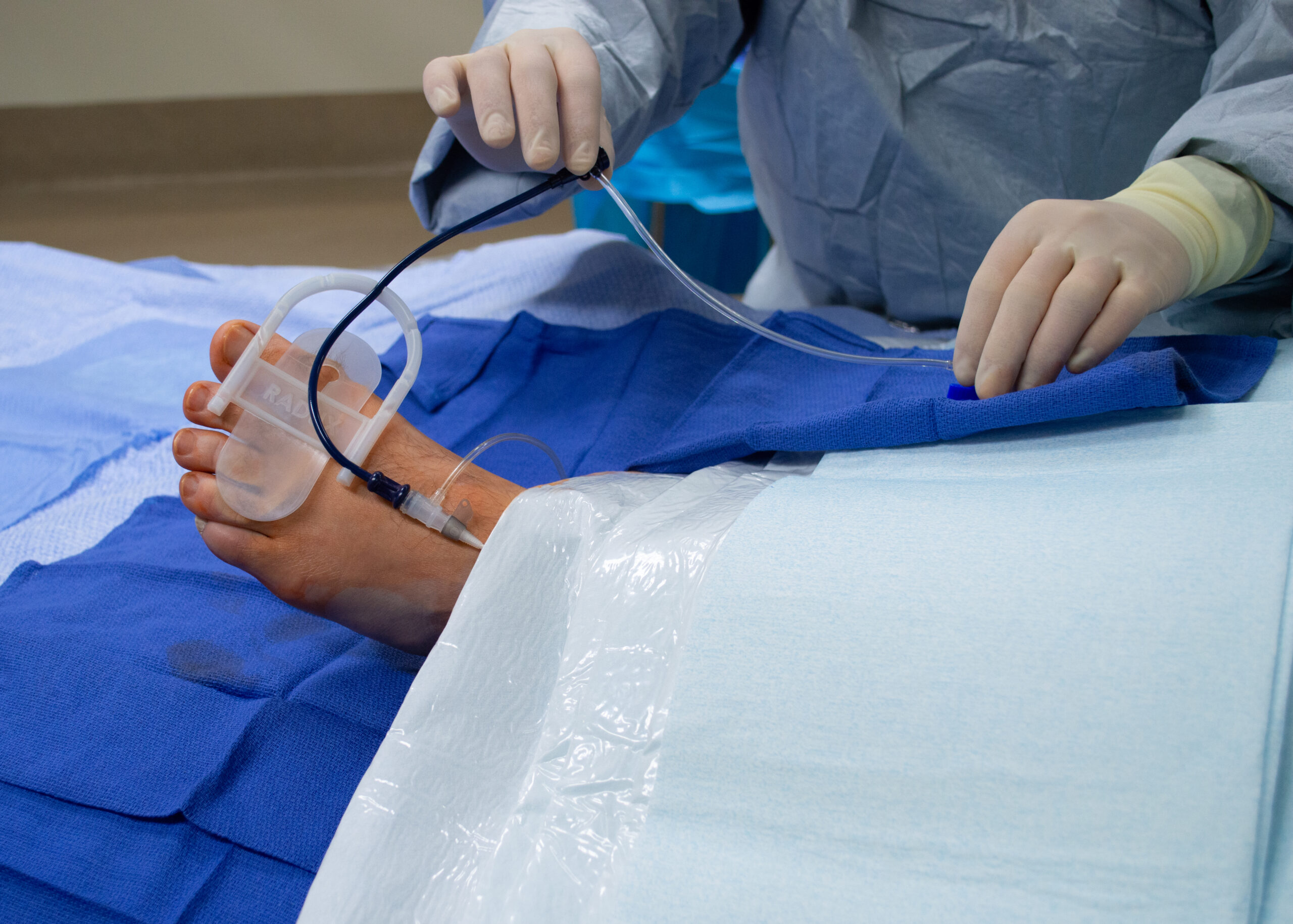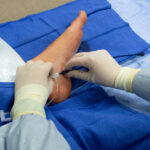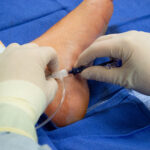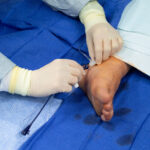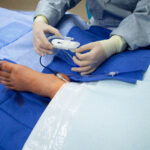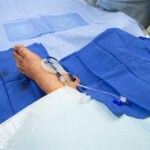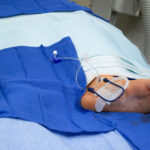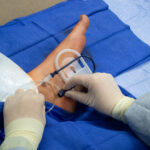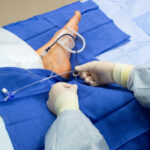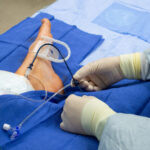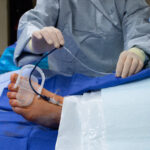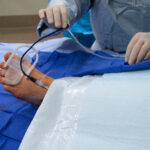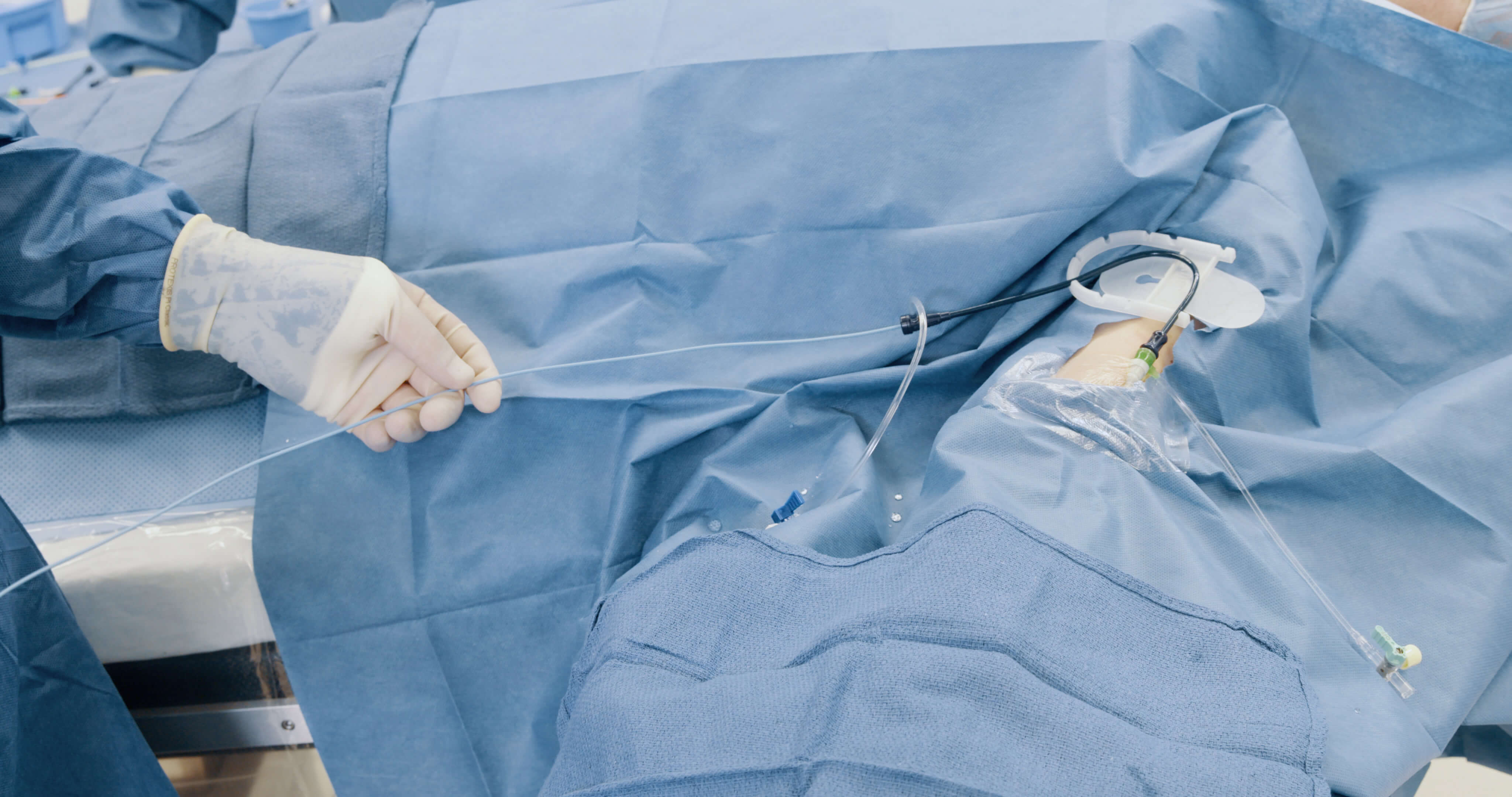StandTall™ 25cm
Maintain purchase, redirect workflow and stabilize vascular access during complex interventions. StandTall™ 25cm allows you to take control and redirect workflow back to the operator.
Making A Difference
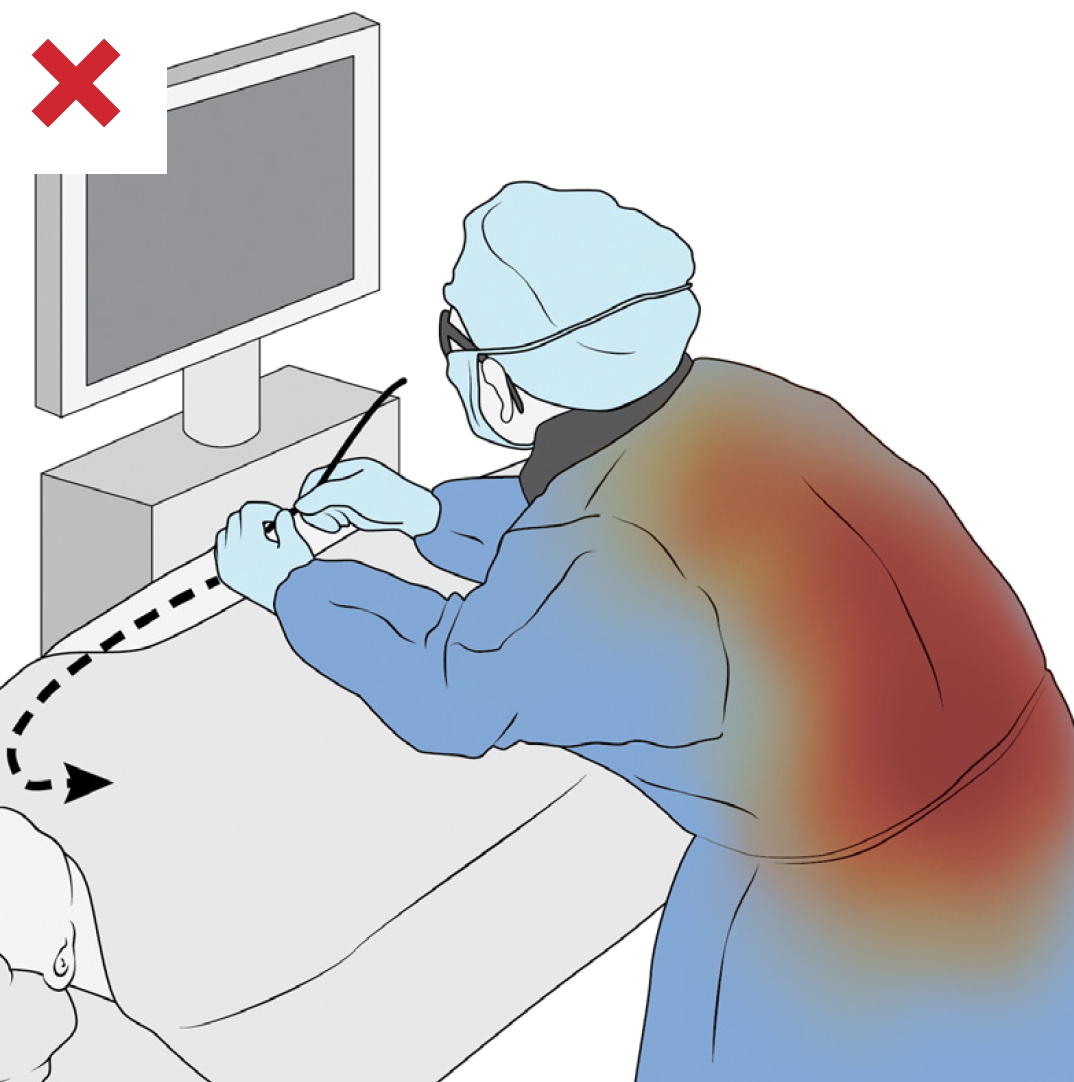
Interventional radiologists are routinely challenged with long wire and catheter management during fluoroscopic guided imaging and procedures. Current vascular access sheaths and procedures routinely require multiple access sites and short purchases creating workflow and wire management difficulties.
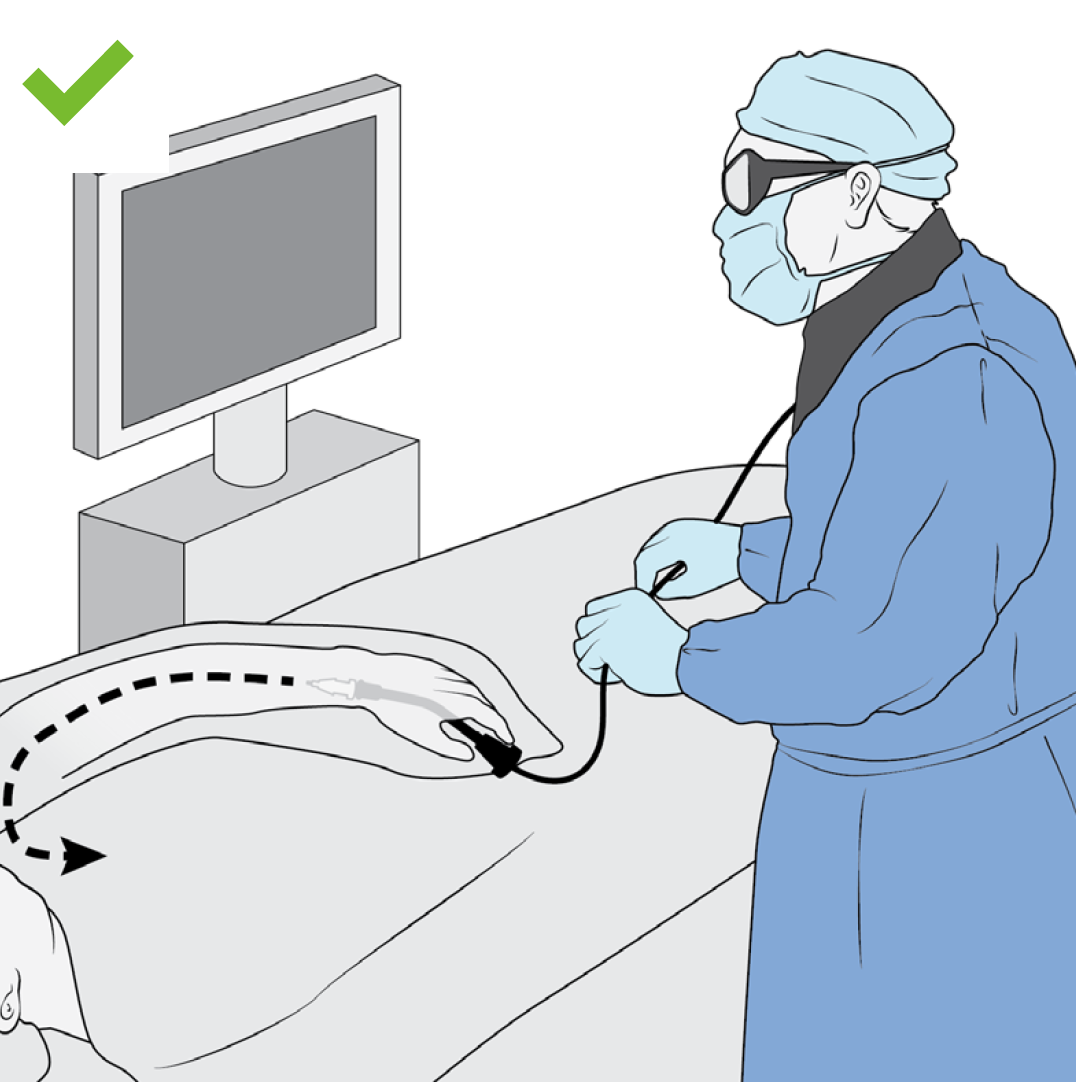
StandTall™ is an external vascular sheath extender that is designed to overcome the ergonomic limitations of challenging access-site procedures. The measurable advantages of this device provide the physician with a more comfortable posture, thereby reducing musculoskeletal stress and fatigue. StandTall™ simultaneously decreases radiation exposure while creating a more stable workflow environment.
Simple Set Up, Ease of Use
The universal horseshoe shaped adapter securely attaches the StandTall™ external specialty support sheath to the vascular access sheath. The adhesive clasp is then positioned to secure StandTall™ in the optimal place and adheres to the patient or drape. StandTall™ is then shaped into its desired position and secured onto the adhesive clasp redirecting and stabilizing workflow back toward the physician, staff and standard room set up. Fill out our contact us form or give us a call at 800-935-3137 with any questions or to get a quote started.
Setting up StandTall™ is easy and can be done in less than 2 minutes.
- Review patient anatomy and conditions to establish StandTall™ length.
- Flush StandTall™ and then attach to the vascular access sheath via the universal sheath adapter.
- Position the adhesive clasp to secure StandTall™ in the optimal position and adhere it to the patient or sterile drape.
- Shape StandTall™ into the desired position and secure it onto the adhesive clasp of the distal palm.
- Pronate and position the left arm across the patient to the right side of the table and secure arm to prevent arm drift.
We also offer StandTall™ 10cm / 15cm, allowing you to better match an individual patients anatomy and eases vascular access from the left radial artery.
Instructional Video (Live Procedure)
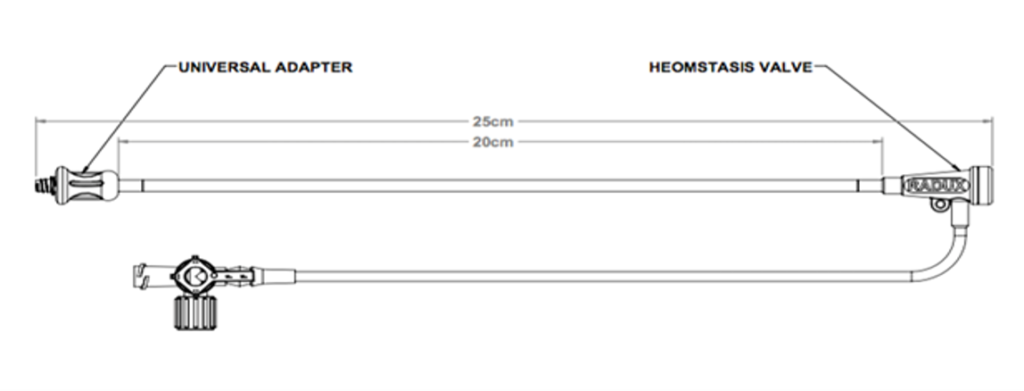
StandTall™ Features:
- FDA Class 2 510k Exempt
- Single use
- 8.3 FR inner diameter
- Hydrophilic inner lining
- Shapeable, flexible stainless steel coiled shaft
- Multi-position clasp with adhesive securely attaches to patient or drape allowing for positioning from 0º to 180º
- Universal Adapter: Compatible with 4-8 FR Boston Scientific, Cordis, Medtronic, and Terumo vascular sheaths as well as with 7-8 FR Cook vascular sheaths
- Not compatible with Cook introducer sheaths
StandTall™ Procedures:
- Antegrade arterial puncture for arterial intervention
- Arterial-venous fistula intervention
- Carotid access for stent, acute stroke or emergent CNS reperfusion
- Pedal access for limb salvage and chronic limb ischemia
- Morbidly obese patient management
- Bilateral access
- Popliteal access
- Translumbar access
Additional Product Images
